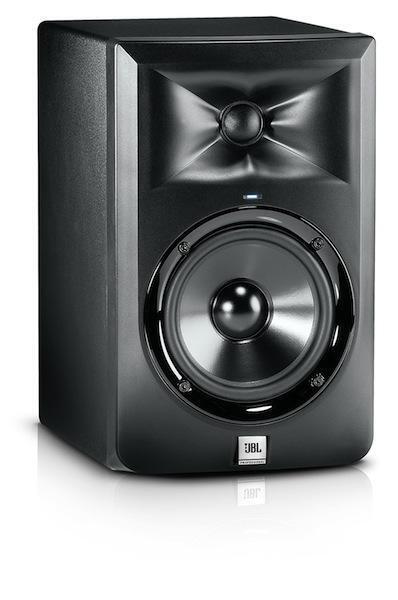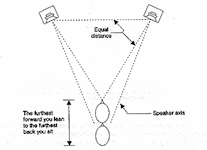How to Choose Studio Monitors
Your studio monitor speakers need to provide the most accurate, uncolored representation of your music as possible. Whether you’re recording, editing, mixing, or mastering audio, a sonically transparent monitoring system ensures your mix will translate well to headphones, car audio systems, TVs, and other listening systems. And because there is also more to consider than accuracy when selecting studio monitors, we’ve put together this guide to help you find the best options for your studio space.
- Active vs. Passive Monitors
- Power – How Many Watts Do I Need?
- Different Driver Types and Why (Do) They Matter
- Cabinet Considerations: Ported or Closed?
- EQ, Room Correction, and Other Features
- Do I Need a Subwoofer?
- Placement and Isolation
- Where Do I Go from Here?
Active vs. Passive Monitors
While there is a vast array of active studio monitors to choose from these days, it’s worth noting that the recording industry grew up with passive monitors. While one type isn’t completely superior to the other, it’s important to understand the differences.
Passive monitoring systems are modular in nature, requiring you to match your speakers with an appropriate amplifier and crossover. Active monitors have all that built in, which presents a few benefits. You don’t have to deal with extra rack gear, and you know the internal amplifier is specifically matched to that speaker for the best sonic performance.
While you can create a world-class passive monitoring system, countless professional studios worldwide rely on active systems with no regrets. Unless you already have a specific reason to prefer a passive system, you’ll probably appreciate both the convenience and performance you get from an active studio monitoring system.
Power – How Many Watts Do I Need?
In a studio monitoring system, the power handling of the system is going to have a big effect on the overall sound, and not just in terms of volume. It also determines your dynamic range, the amount of headroom you have before signals peak. Higher wattage means you’ll be able to hear more transient detail, and you’ll be better able to make precise adjustments to compressors, limiters, and gates.
Said another way, if you listen to a mix on two monitoring systems with different wattages at the same average volume level, the higher wattage system will give you more headroom. Many people are unaware that music peaks (transients like snare hits or kick drums) can demand as much as 10X (yes, TEN TIMES) as much power as average music program material. So for a given volume level that might demand an average of 20 watts, the program peaks could require as much as 200 watts. If you have an amp that can deliver a clean 70 watts, then you’ll be 130 watts shy of what you need. That results in greater distortion and possibly clipping during that musical peak, and for a kick drum in most pop music, that happens very often. While you don’t necessarily need the highest possible power rating, keep in mind that more wattage will produce more definition and dynamic range, not just overall volume.
Power – Single-amp, Bi-amp, and Tri-amp
How the input signal is divided up to power the drivers in a studio monitor determines whether it’s a single-amp, bi-amp, or tri-amp configuration. Many studio monitors have two speakers in them: a tweeter for high frequencies and a woofer for low and midrange frequencies. Some may add a third speaker so that low frequencies are sent to the woofer, and mid-frequencies are sent to a dedicated midrange speaker. In a single-amp configuration, a crossover network divides the output of one amplifier, which sends the appropriate frequencies to each speaker: low frequencies to the woofer and high frequencies to the tweeter. In a bi-amp configuration, the crossover network precedes two separate amplifiers which are each used to power the high- and low-frequency drivers. A studio monitor that divides the signal three ways to feed three amplifiers that drive each high-, mid-, and low-frequency speaker individually is a tri-amp configuration.
Generally speaking, bi-amp and tri-amp configurations have a flatter (more accurate) frequency response, as well as greater definition. By powering each speaker individually, instead of all from a single amp, each driver is able to reproduce its dedicated frequency range more precisely. When comparing single-amped with bi- or tri-amped monitors that are similar in speaker size, the bi- and tri-amped monitors will usually sound clearer and more defined.
Different Driver Types and Why They Matter
You’ll find all manner of speaker construction materials out there, from paper to Kevlar to aluminum alloys and beyond. Manufacturers are constantly innovating, and if you’re interested there are plenty of resources available about the properties of different materials. But step back for a moment – do you really care what it’s made of at the end of the day?
Materials play a big part in the sound of a speaker, but would you really buy studio monitors based on one specific material used in its construction? While we fully acknowledge the huge impact speaker driver materials have on its sound, you can quickly get confused if you focus on materials instead of application-specific benefits.
Cabinet Considerations: Ported or Closed?
You’ll find that many smaller studio monitors, and quite a few larger ones too, have a ported cabinet that helps extend the frequency response lower for more bass. While this can be beneficial, the sonic accuracy of ported cabinets may not be as precise as closed cabinets. This behavior is exaggerated if the ports are on the back of the speakers, and they are then placed too close to a wall. If you can’t avoid putting your studio monitors close to walls or corners, you may want to choose front-ported or closed designs for more accurate monitoring.
EQ, Room Correction, and Other Features
Many studio monitor features have some type of EQ built into them to help you tune them to your room. Some even have digital processing that can optimize their performance for your acoustic space. While these are helpful features, it’s important to remember that you can’t cheat physics. EQ and room correction DSP can help make the most out of a bad-sounding room, and they can make a room with good acoustics sound great. But ultimately, no set of speakers can make up for uncontrolled acoustics in your control room. Check out Sweetwater’s Acoustic Treatment Buying Guide to learn more about that.
Do I Need a Subwoofer?
It depends completely on what you’re doing with audio. If you’re mixing sound for TV or motion pictures, then a multi-speaker monitoring setup with a subwoofer is practically essential. If you’re mixing your band’s demo tracks that you recorded in your basement, you really only need a stereo pair of studio monitors. Ask yourself this – how will your audience be listening to your project? If it’s likely to get played through a home theater system with a sub, or a powerful dance club system, you’ll need a subwoofer to hear what’s going on in the lowest bass octaves. If you’re mixing music that most people will listen to on their iPod or in their car, your mixes probably won’t much benefit from the extended range a subwoofer will add to your monitoring system.
Another consideration is the size of your room. Without getting into the mathematics, smaller rooms simply aren’t large enough to allow bass frequencies to fully develop. Putting a subwoofer in a small room is just asking for sonic inaccuracies: you’ll notice volume peaks and dips throughout the room, some bass notes will sound solid while others will sound clouded and indistinct, and your studio’s overall sound will be unbalanced. You also need to be cautious about introducing too much low frequency energy into your room and skewing your perception of how much low end is appropriate for your mix. Acoustic treatment such as bass traps will help reduce these issues, but the size of your room will always remain a limiting factor in your quest for sonic accuracy.
Placement and Isolation
At least there are no gray areas here – place a stereo pair of studio monitors so they form an equilateral triangle with your head when you’re seated in your mix position. Said another way, place them so that they’re as far away from you as they are from each other. This will result in the most accurate frequency response and clearest stereo image. If you’re setting up a multichannel surround sound system, it gets more complicated – contact your Sweetwater Sales Engineer and they can direct you to more resources on surround sound speaker placement.
Speaker stands help improve the sound of your monitors compared to placing them directly on a desk or mixing console. Sound will reflect off the desk or console and will arrive at your ears just slightly after the direct sound, causing subtle comb filtering that reduces the accuracy of your monitoring. Here’s a studio tip from a pro: Place a small mirror on any hard surface surrounding or between you and your monitor. If you can see the monitor’s reflection in the mirror from your mix position, that surface will act like an acoustic mirror and reflect sound via a non-direct path into your ear, causing comb filtering. Any acoustically hard area between you and your monitors should be treated with sound-absorbing material. Also, speakers will transmit some of their energy into the surface they’re placed on, causing further sonic distortions if they’re not isolated. Placing your studio monitors on stands with isolation pads is the best way to go.
Shop for studio monitor stands
Where Do I Go From Here?
We’ve covered most of the basic considerations when searching for new studio monitor speakers, and much of your research from this point on will be determined largely by what type of work you’re doing in your studio. Here are just a few more points to keep in mind:
Size
The size of your speakers should be appropriate for the size of your room. If you’re mixing in a small space, you’ll get much more accurate results with smaller monitors.
Sound
Remember that technically speaking, studio monitors aren’t trying to sound “good.” They’re trying to sound as accurate and precise as possible. The ideal set of studio monitors should reveal every detail in your mix, both good and bad, while portraying an accurate balance across the entire frequency range.
Keep in mind that it’s almost impossible to predict how a set of studio monitors will sound in your room. Even if you invest time in auditioning a set at a store or a friend’s studio, the acoustics of your room will play a huge role in what you’ll hear when you’re mixing. You can make note of certain characteristics, but don’t expect them to sound exactly the same.
Acoustic Treatment
If you’re serious about your choice of studio monitors, you should also be serious about controlling the acoustics in your room. If you’re just starting out, we highly recommend setting aside some of your budget for some basic absorbent acoustic treatment – that way you’ll hear more of your speakers and less of your room’s reflections. Check out our Acoustic Treatment Buying Guide to learn more.
Once you have a general idea about what type of studio monitor system you’ll need, call your Sweetwater Sales Engineer at (800) 222-4700, and we’ll help you determine what your best options are!







